An Experimental Study of Wall Effect on a Hot Settling Sphere in a Newtonian-Fluid-Contained Block Using Photography
Abstract
1. Introduction
2. Laboratory Setup
2.1. Image Processing
2.2. Error Analysis
3. Results and Data Analysis
3.1. Cold Settling Sphere (Away from the Wall)
3.2. Hot Settling Sphere (Away from the Wall)
3.3. Releasing the Sphere near the Wall
4. Conclusions
- For a cold settling sphere, it was observed that after a short while, when the total force became zero, the sphere reached its terminal velocity and continued to settle at that velocity. The test results were compared to the numerical results obtained by the equations discussed in the paper, and a maximum error of 6.5% was observed, which can be caused by the proposed values for the drag coefficient.
- Heating the sphere would change its velocity. Higher temperatures led to higher velocities. At 300 °C, the sphere’s velocity increased by 40%, which can be due to the formation of a vapor layer around the sphere and the consequent drag coefficient variation. It should be noted that the velocity of the hot sphere was reduced after a while and reached the terminal velocity of the cold sphere. This can be caused by the temperature decrease after entering the water and reaching the ambient temperature. However, proper investigation of the process requires equipment capable of measuring the sphere’s temperature during its trajectory. So, it can be recommended for future studies.
- The near-the-wall settling sphere can experience deviations in the trajectory. The deviation was less than half the sphere’s diameter at the ambient temperature, but the horizontal changes became significant as the temperature increased. The maximum deviation was recorded at the temperature of 100 °C, and the sphere experienced a change in its vertical trajectory after passing 15% of the trajectory. As the temperature increased, the change in the vertical trajectory was delayed. The deviation led to a horizontal velocity component, affecting the vertical one. However, since the horizontal component was insignificant, the vertical velocity was not so different from the away-from-the-wall case. The results suggested that the horizontal component was reduced after a while and ultimately became zero at the end of the fall.
Author Contributions
Funding
Data Availability Statement
Conflicts of Interest
References
- Dai, Y.; Zhang, Y.; Li, X. Numerical and experimental investigations on pipeline internal solid-liquid mixed fluid for deep ocean mining. Ocean. Eng. 2021, 220, 108411. [Google Scholar] [CrossRef]
- Zou, L.; Sun, J.Z.; Sun, Z.; Yu, Z.B.; Zhao, H.B. Study of two free-falling spheres interaction by coupled SPH–DEM method. Eur. J. Mech.-B/Fluids 2022, 92, 49–64. [Google Scholar] [CrossRef]
- Gylys, J.; Skvorcinskiene, R.; Paukstaitis, L.; Gylys, M.; Adomavicius, A. Water temperature influence on the spherical body’s falling velocity. Int. J. Heat Mass Transf. 2015, 89, 913–919. [Google Scholar] [CrossRef]
- Mehrabian, S.; Acosta, E.; Bussmann, M. Oil–Particle Separation in a Falling Sphere Configuration: Effect of Oil Film Thickness. Energy Fuels 2016, 30, 8776–8786. [Google Scholar] [CrossRef]
- Mehri, A.; Akbarzadeh, P. Water entry of grooved spheres: Effect of the number of grooves and impact velocity. J. Fluids Struct. 2021, 100, 103198. [Google Scholar] [CrossRef]
- Jalaal, M.; Ganji, D.D.; Ahmadi, G. Analytical investigation on acceleration motion of a vertically falling spherical particle in incompressible Newtonian media. Adv. Powder Technol. 2010, 21, 298–304. [Google Scholar] [CrossRef]
- Barati, R.; Neyshabouri, S.A.A.S.; Ahmadi, G. Development of empirical models with high accuracy for estimation of drag coefficient of flow around a smooth sphere: An evolutionary approach. Powder Technol. 2014, 257, 11–19. [Google Scholar] [CrossRef]
- Nouri, R.; Ganji, D.; Hatami, M. Unsteady sedimentation analysis of spherical particles in Newtonian fluid media using analytical methods. Propuls. Power Res. 2014, 3, 96–105. [Google Scholar] [CrossRef]
- Yang, H.; Fan, M.; Liu, A.; Dong, L. General formulas for drag coefficient and settling velocity of sphere based on theoretical law. Int. J. Min. Sci. Technol. 2015, 25, 219–223. [Google Scholar] [CrossRef]
- Rooki, R.; Doulati Ardejani, F.; Moradzadeh, A.; Kelessidis, V.C.; Nourozi, M. Prediction of terminal velocity of solid spheres falling through Newtonian and non-Newtonian pseudoplastic power law fluid using artificial neural network. Int. J. Miner. Process. 2012, 110, 53–61. [Google Scholar] [CrossRef]
- Hazzab, A.; Terfous, A.; Ghenaim, A. Measurement and modeling of the settling velocity of isometric particles. Powder Technol. 2008, 184, 105–113. [Google Scholar] [CrossRef]
- Kheloufi, N.; Lounis, M. Viscosity measurement using optical tracking of free fall in Newtonian fluid. Acta Phys. Pol. 2015, 128, 123–127. [Google Scholar] [CrossRef]
- Sulaymon, A.H.; Wilson, C.A.M.E.; Alwared, A.I. An experimental investigation of the settling behavior of two spheres in a power law fluid. J. Non-Newton. Fluid Mech. 2013, 192, 29–36. [Google Scholar] [CrossRef]
- Dash, S.M.; Lee, T.S. Two spheres sedimentation dynamics in a viscous liquid column. Comput. Fluids 2015, 123, 218–234. [Google Scholar] [CrossRef]
- Luo, K.; Wei, A.; Wang, Z.; Fan, J. Fully-resolved DNS study of rotation behaviors of one and two particles settling near a vertical wall. Powder Technol. 2013, 245, 115–125. [Google Scholar] [CrossRef]
- Tsai, L.-H.; Chang, C.-C.; Pan, T.-W.; Glowinski, R. Numerical study of the wall effect on particle sedimentation. Int. J. Comput. Fluid Dyn. 2018, 32, 158–166. [Google Scholar] [CrossRef]
- Fidleris, V.; Whitmore, R. Experimental determination of the wall effect for spheres falling axially in cylindrical vessels. Br. J. Appl. 1961, 12, 490. [Google Scholar] [CrossRef]
- Feng, Z.-G.; Michaelides, E.E. Inclusion of heat transfer computations for particle laden flows. Phys. Fluids 2008, 20, 040604. [Google Scholar] [CrossRef]
- Ström, H.; Sasic, S. A multiphase DNS approach for handling solid particles motion with heat transfer. Int. J. Multiph. Flow 2013, 53, 75–87. [Google Scholar] [CrossRef]
- Hashemi, Z.; Abouali, O.; Kamali, R. Three dimensional thermal Lattice Boltzmann simulation of heating/cooling spheres falling in a Newtonian liquid. Int. J. Therm. Sci. 2014, 82, 23–33. [Google Scholar] [CrossRef]
- Majlesara, M.; Abouali, O.; Kamali, R.; Ardekani, M.N.; Brandt, L. Numerical study of hot and cold spheroidal particles in a viscous fluid. Int. J. Heat Mass Transf. 2020, 149, 119206. [Google Scholar] [CrossRef]
- Li, J.-C.; Wei, Y.-J.; Wang, C.; Xia, W.-X. Drag reduction characteristics of heated spheres falling into water. Chin. Phys. B 2018, 27, 124703. [Google Scholar] [CrossRef]
- Jetly, A.; Vakarelski, I.U.; Yang, Z.; Thoroddsen, S.T. Giant drag reduction on Leidenfrost spheres evaluated from extended free-fall trajectories. Exp. Therm. Fluid Sci. 2019, 102, 181–188. [Google Scholar] [CrossRef]
- Mehri, A.; Akbarzadeh, P. Hydrodynamic characteristics of heated/non-heated and grooved/un-grooved spheres during free-surface water entry. J. Fluids Struct. 2020, 97, 103100. [Google Scholar] [CrossRef]
- Wang, X.; Lyu, X. Experimental study on vertical water entry of twin spheres side-by-side. Ocean. Eng. 2021, 221, 108508. [Google Scholar] [CrossRef]
- Beckwith, T.G.; Buck, N.L.; Marangoni, R.D. Mechanical Measurements; Addison-Wesley Reading: Boston, MA, USA, 1969; Volume 5. [Google Scholar]
- Ferreira, J.M.; Duarte Naia, M.; Chhabra, R.P. An Analytical Study Of The Transient Motion Of A Dense Rigid Sphere In An Incompressible Newtonian Fluid. Chem. Eng. Commun. 1998, 168, 45–58. [Google Scholar] [CrossRef]
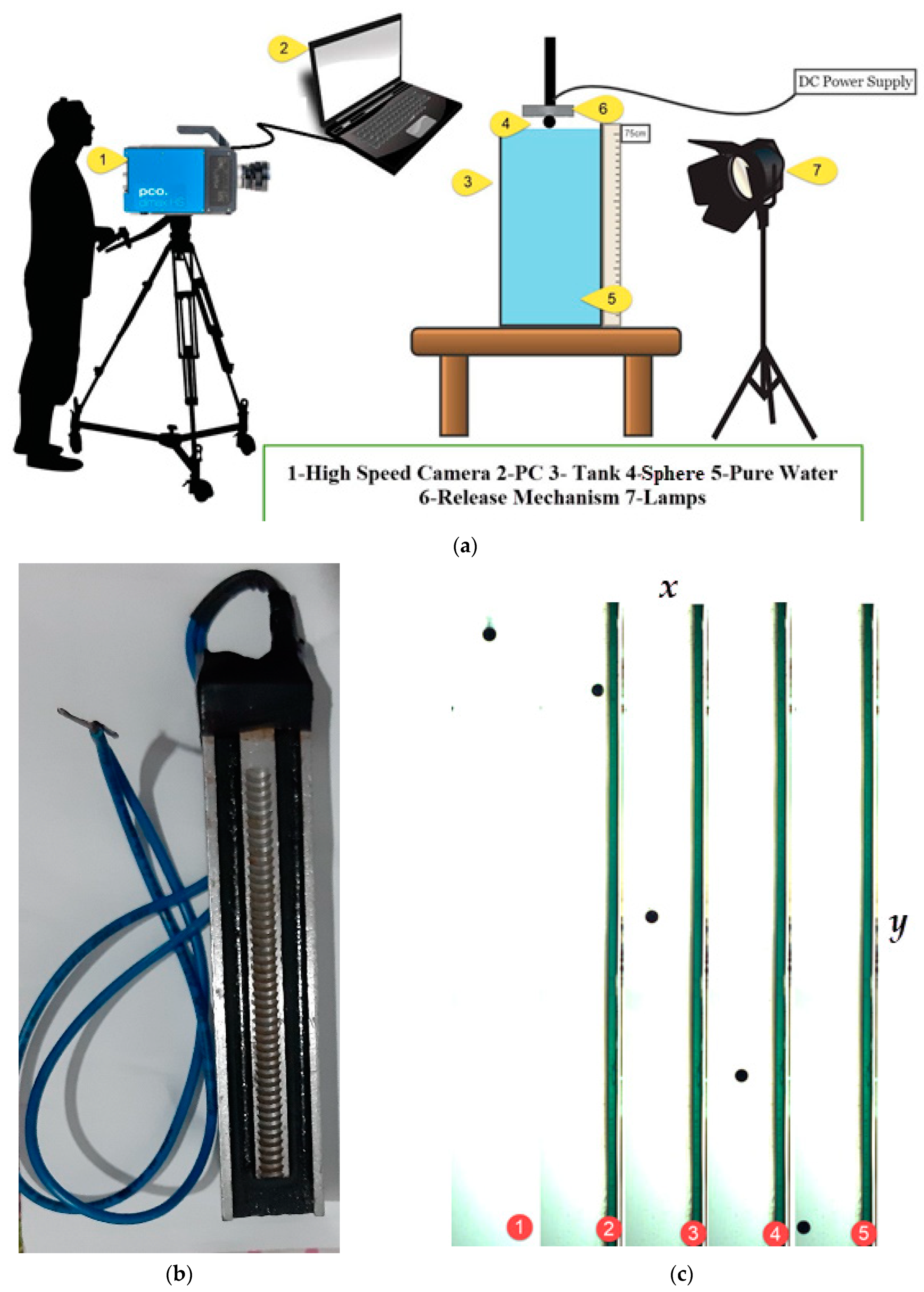
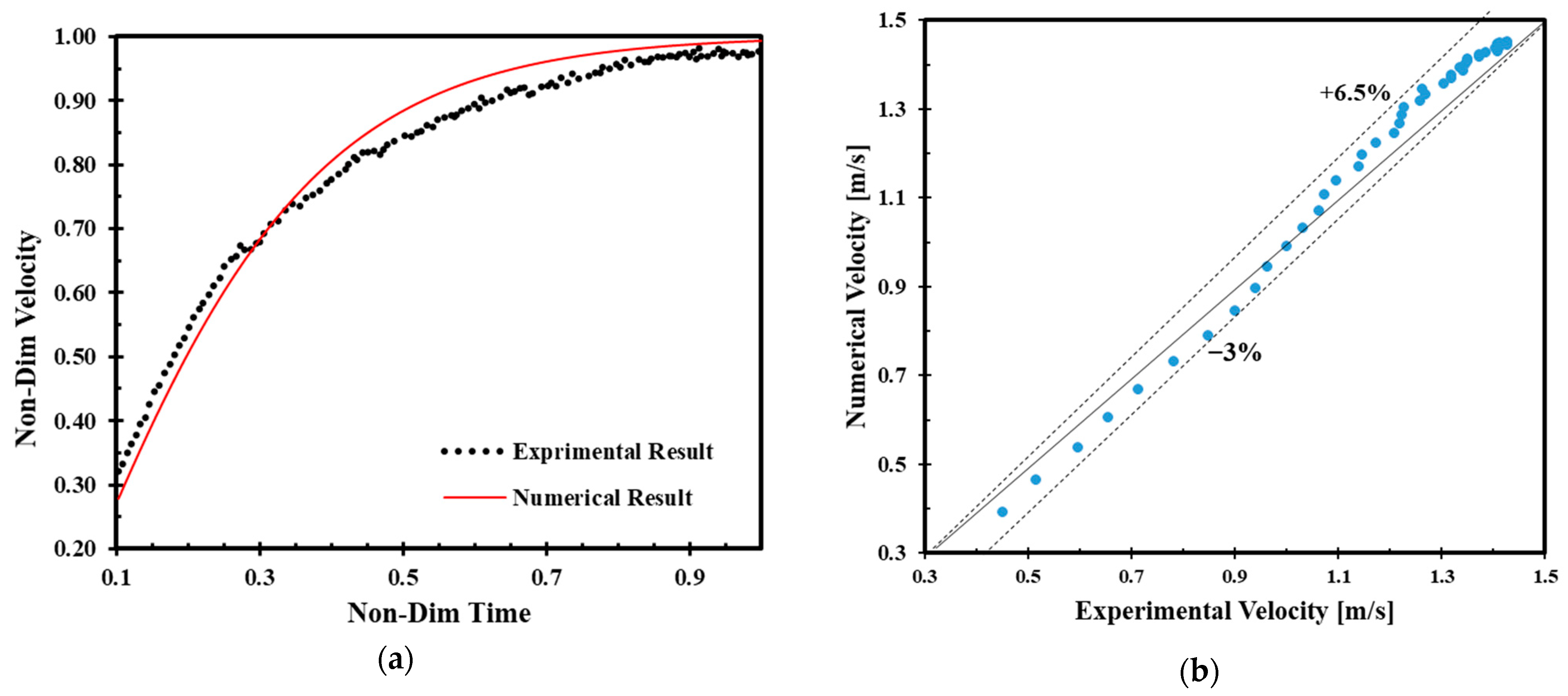
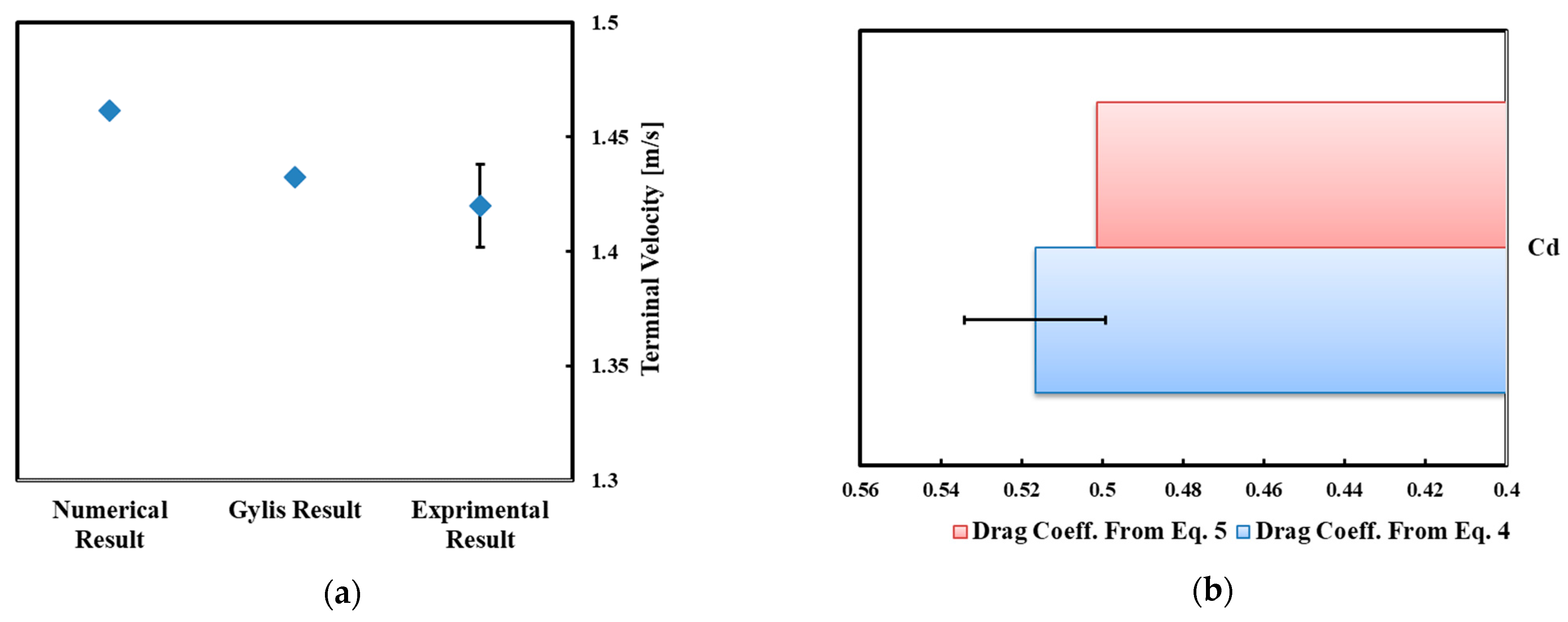
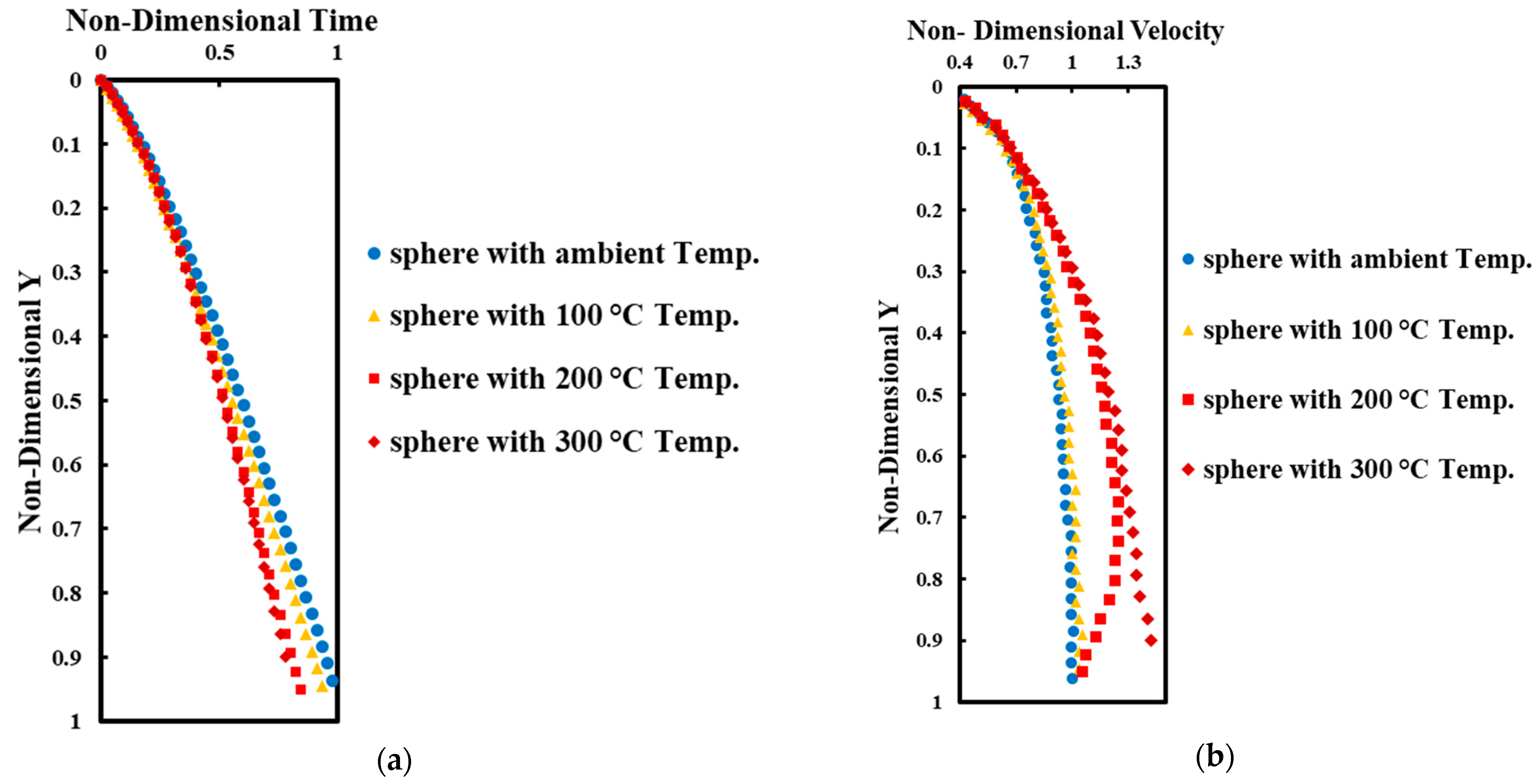
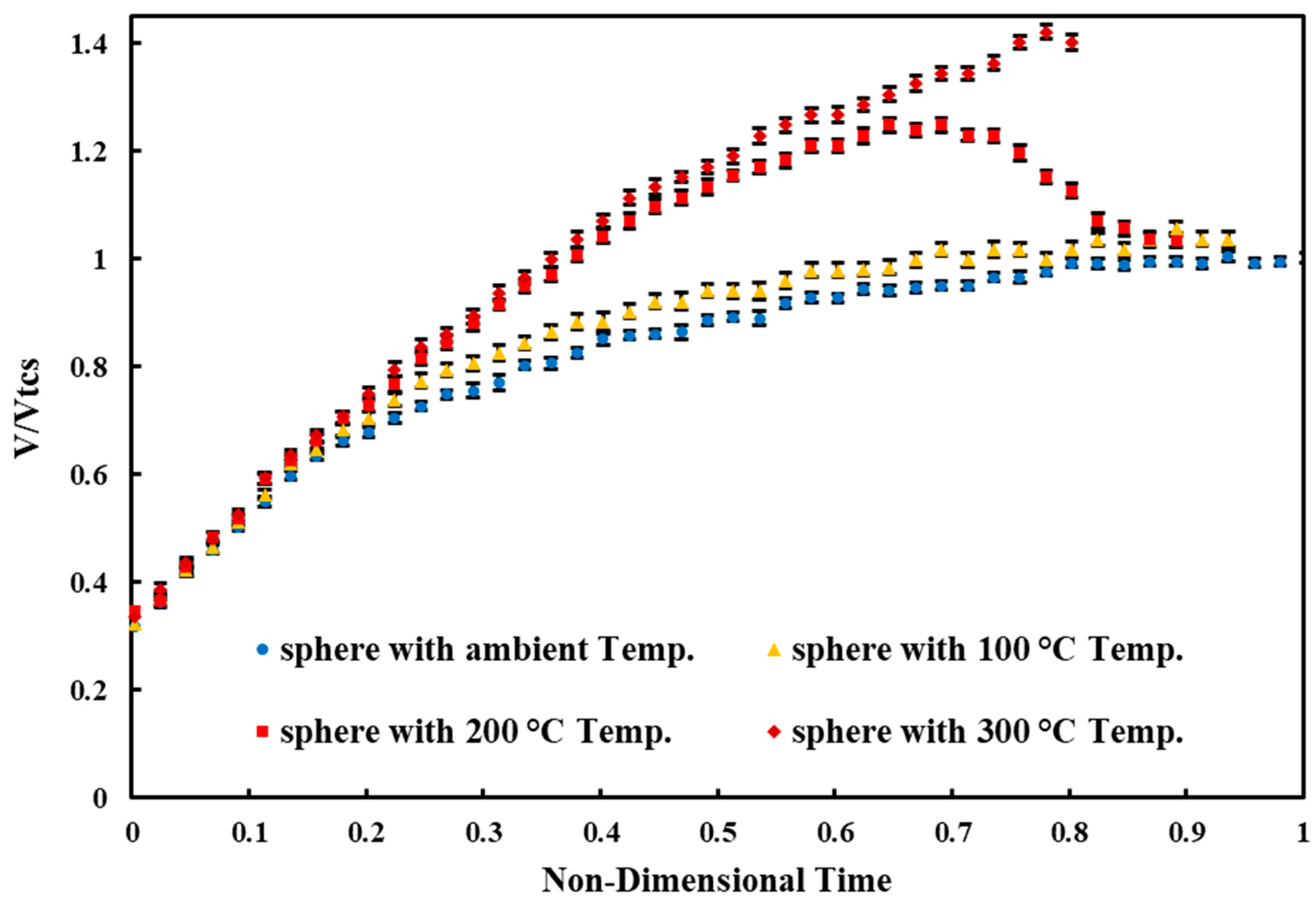
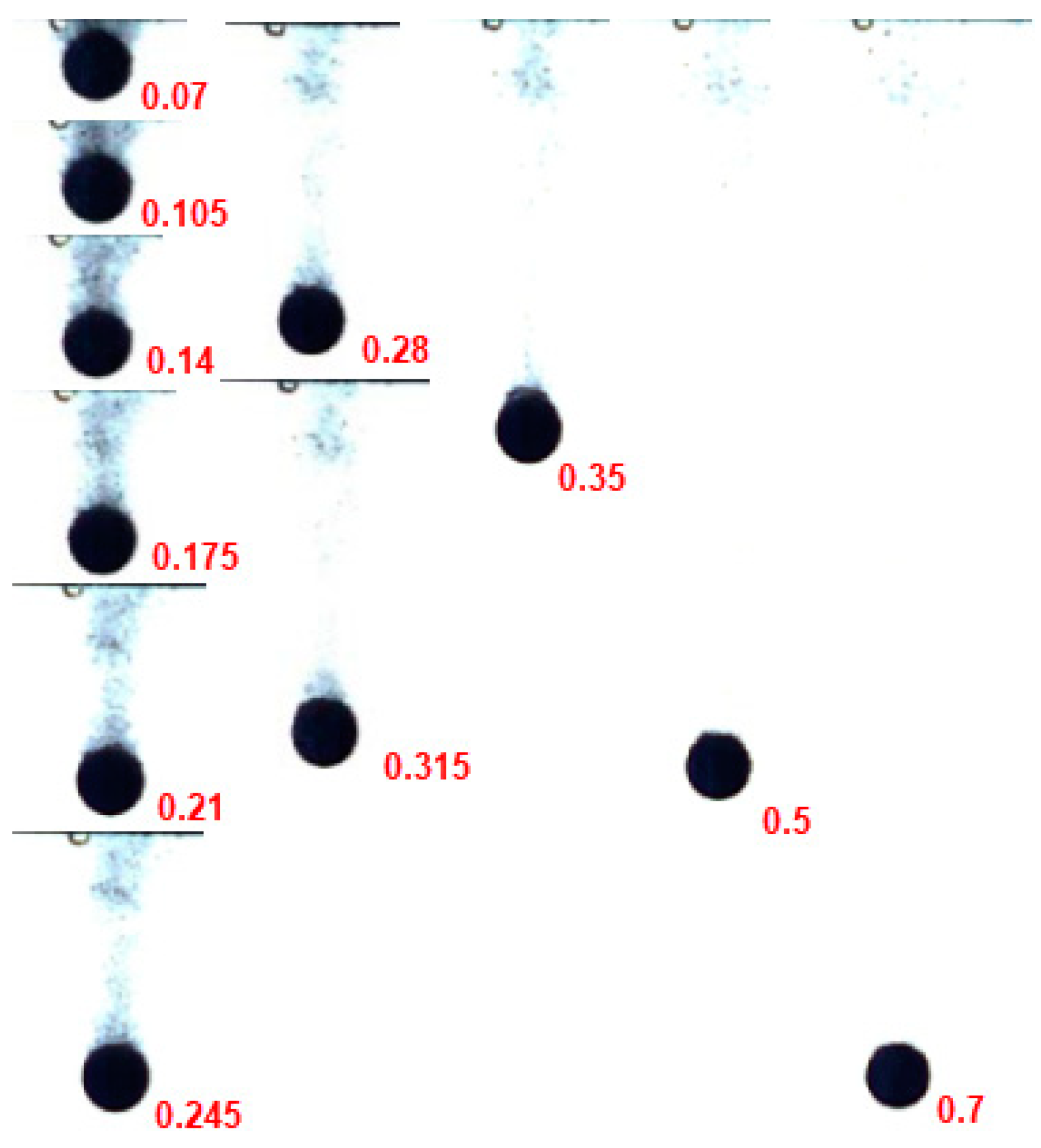

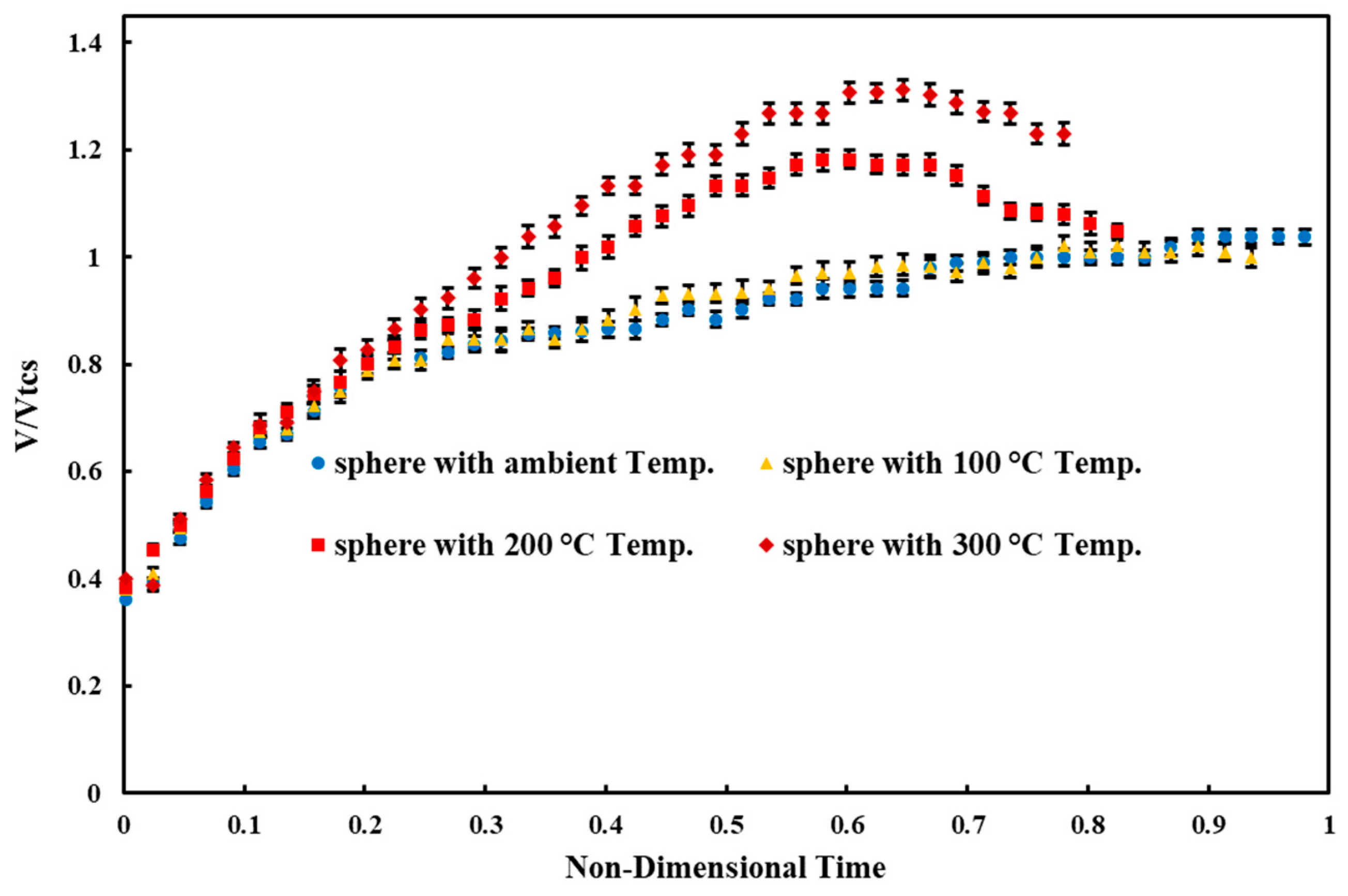
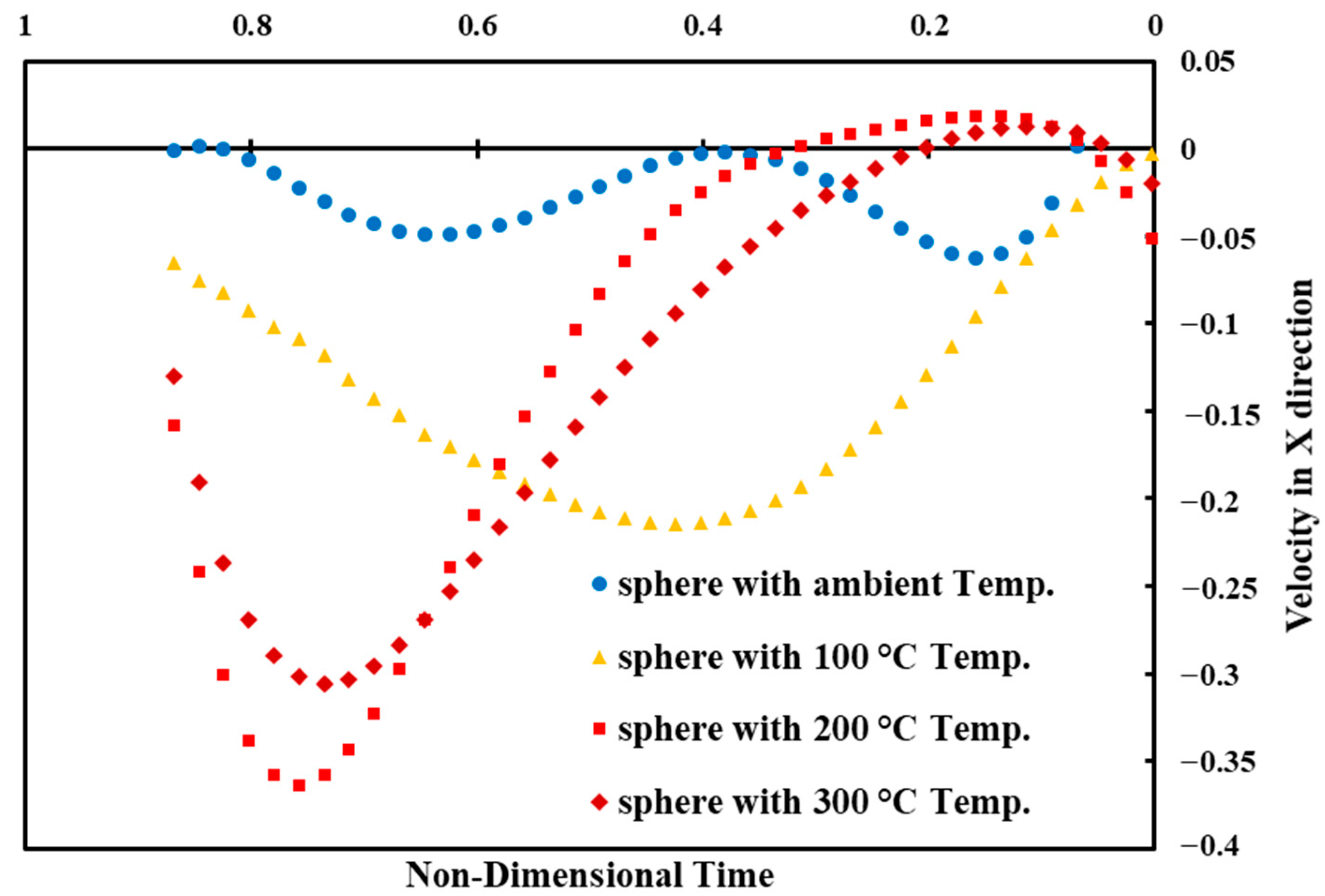
| Parameter | Instrument Error | Uncertainty Error |
|---|---|---|
| Length | ±1.0 mm | - |
| Temperature | ±5 °C | - |
| Velocity | - | 1.5% |
| Reynolds number | - | 2.2% |
| Drag coefficient | - | 2.1% |
Disclaimer/Publisher’s Note: The statements, opinions and data contained in all publications are solely those of the individual author(s) and contributor(s) and not of MDPI and/or the editor(s). MDPI and/or the editor(s) disclaim responsibility for any injury to people or property resulting from any ideas, methods, instructions or products referred to in the content. |
© 2023 by the authors. Licensee MDPI, Basel, Switzerland. This article is an open access article distributed under the terms and conditions of the Creative Commons Attribution (CC BY) license (https://creativecommons.org/licenses/by/4.0/).
Share and Cite
Ashouri, M.; Kayhani, M.H.; Nazari, M. An Experimental Study of Wall Effect on a Hot Settling Sphere in a Newtonian-Fluid-Contained Block Using Photography. Processes 2023, 11, 248. https://doi.org/10.3390/pr11010248
Ashouri M, Kayhani MH, Nazari M. An Experimental Study of Wall Effect on a Hot Settling Sphere in a Newtonian-Fluid-Contained Block Using Photography. Processes. 2023; 11(1):248. https://doi.org/10.3390/pr11010248
Chicago/Turabian StyleAshouri, Mojtaba, Mohammad Hasan Kayhani, and Mohsen Nazari. 2023. "An Experimental Study of Wall Effect on a Hot Settling Sphere in a Newtonian-Fluid-Contained Block Using Photography" Processes 11, no. 1: 248. https://doi.org/10.3390/pr11010248
APA StyleAshouri, M., Kayhani, M. H., & Nazari, M. (2023). An Experimental Study of Wall Effect on a Hot Settling Sphere in a Newtonian-Fluid-Contained Block Using Photography. Processes, 11(1), 248. https://doi.org/10.3390/pr11010248








